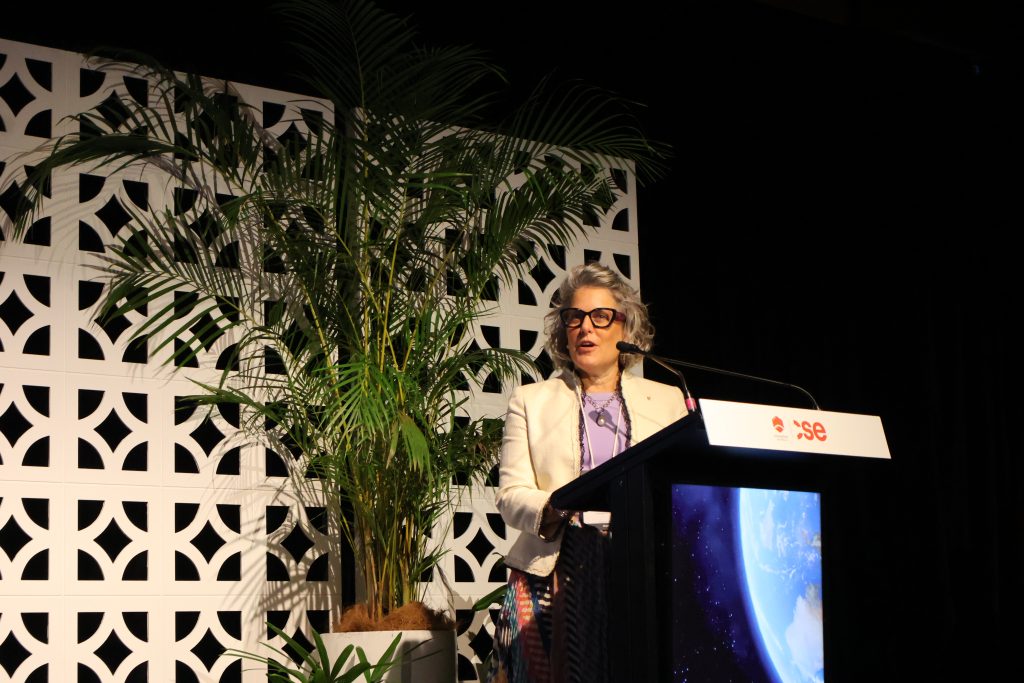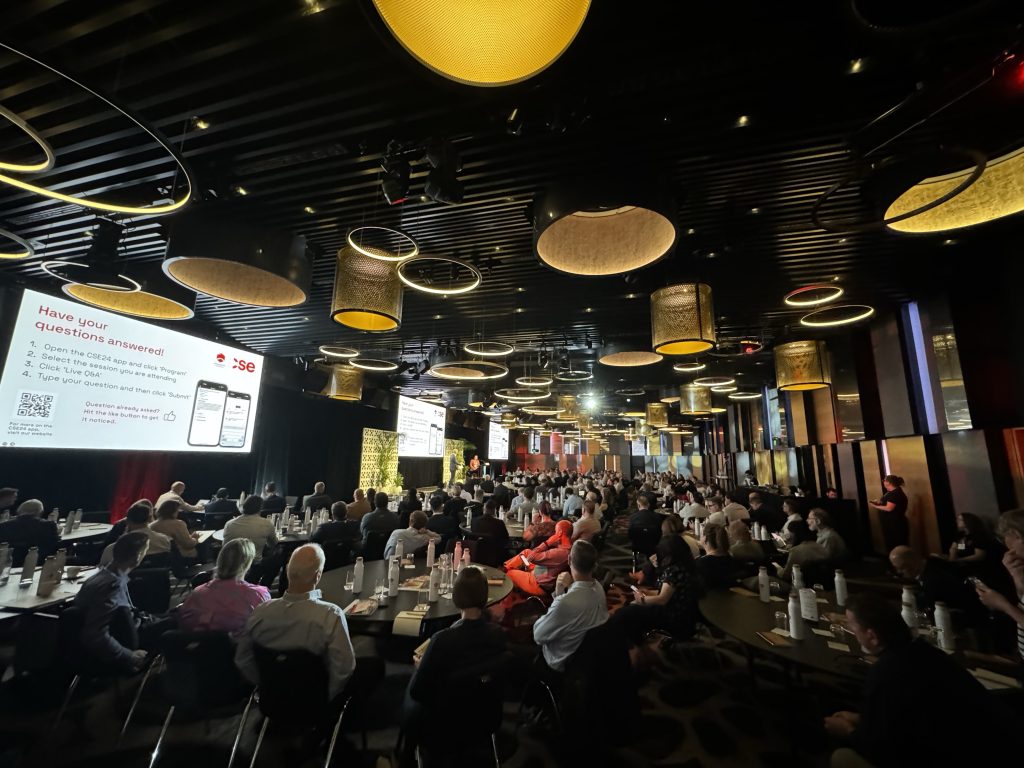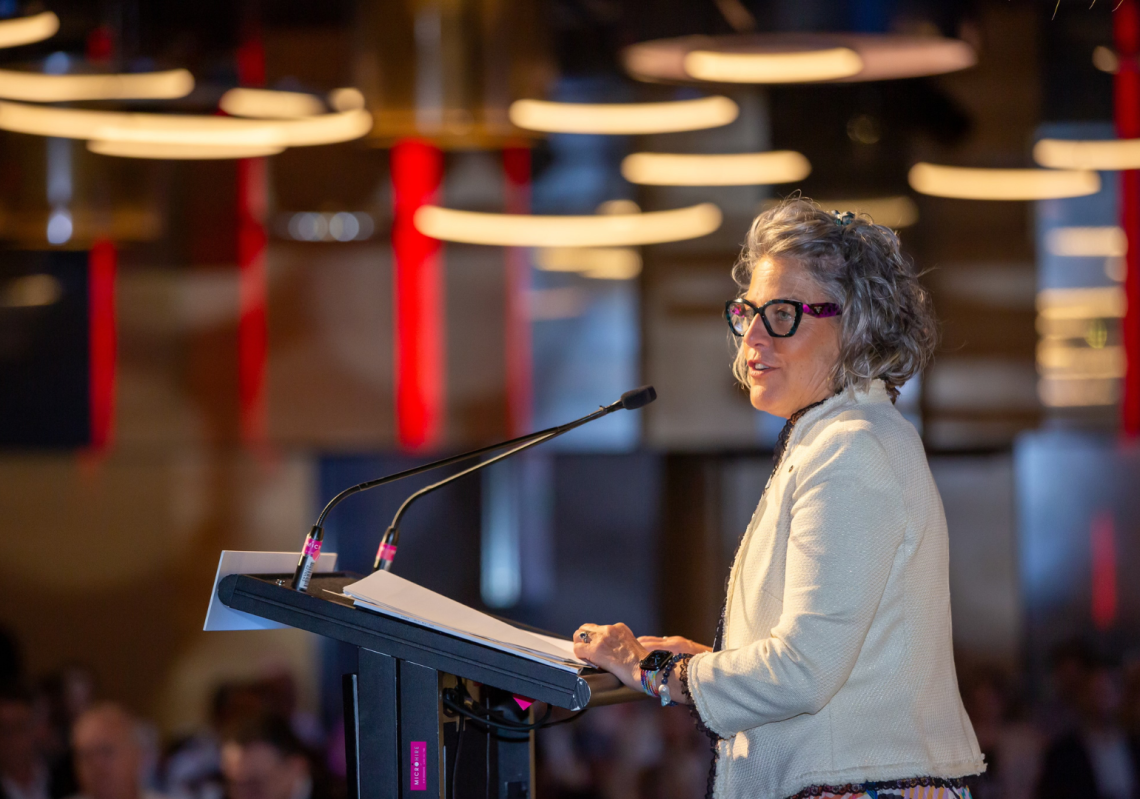From planning to approvals and execution, engineers play many roles in decarbonisation and the energy transition. Engineers Australia’s Climate Smart Engineering (CSE) 2024 conference explored all these themes and more.
The Paris Olympics and Paralympics have seen Australia punch above its weight both in swimming events and the overall medal tally. Identifying how the same can be done in the engineering sector formed the crux of discussions.
Engineers Australia’s flagship conference, held this year in Brisbane, focused on the country’s most significant climate challenge: the clean energy transition. The shift to renewable and cleaner energy alternatives requires innovative engineering solutions that balance reliability, affordability and sustainability.
The event featured a plethora of industry experts, canvassed technical solutions and future-minded strategies, examining everything from the role of digital technology and AI to the challenges of decarbonising transport and upskilling in renewable energy.
Navigating regulatory and policy frameworks, and taking a whole-of-systems approach to planning our future energy systems were also key themes.
Engineers Australia CEO Romilly Madew AO FTSE HonFIEAust EngExec prefaced the event with a reminder of the state of play and an enthusiastic call to action.
“It’s not only about getting cleaner energy fast,” Madew told attendees. “It’s also about having energy security and maintaining energy costs. We need to do it without supply shocks and without cost shocks.
“We’ve made promising strides in Australia during recent years, as batteries are becoming more affordable [and] massive amounts of grid storage are being developed to help stabilise the grid. We’re also seeing the development of renewable energy zones, which bring together multiple forms of renewable energy and storage in one location.
“It’s about how to measure, understand and mitigate embodied carbon costs, because the expectation is that we will all be able to understand and act on matters relating to climate change, regardless of our formal engineering discipline.”

The Queensland context
With the conference taking place this year in Brisbane, attendees heard of ways the state of Queensland is set to tackle the carbon crisis.
Mike Kaiser, Director-General of the Queensland Department of the Premier and Cabinet, laid out the challenge simply.
“Queensland … is a carbon-heavy state,” he said. “We [have] 20 per cent of the population, but we generate one third of Australia’s carbon emissions.”
Embracing new ways of working, he said, must be coupled with protecting existing industries such as mining and aluminium manufacturing – and jobs within those industries. Queensland is good at fostering new industries, he explained.
“We started off as an agricultural-based economy,” he said. “We opened up the Bowen Basin to coal mining in the 1960s. More recently, coal seam gas and LNG is now a world-beating industry here in Queensland.
“But we know that no one’s going to want to buy sustainable [aviation] fuel if the energy input into it is based on coal fired power. No one’s going to want to buy our critical minerals if they’ve been processed using coal-fired power. So saving our existing industries and doing what we’re really great at to create new industries that the world wants – in a way that they want them – is the motivation underpinning the Energy and Jobs Plan.”
Hand in hand
Building support and capacity for a just energy transition was on the agenda for environmental engineer Lizzie Webb, Head of Programs at The Next Economy, a regional economic development agency.
She spoke of the principles needed to support a people-centred and place-based approach to the energy transition, and how to embrace community involvement to ensure cooperation and mutual benefit in the long term.
“What we’re hearing from our working communities is a call to think about development differently, and to really bring communities and regions along as a partner in the process of developing new industries and decarbonisation,” Webb said.
“[We need to bring] everybody along with a particular focus on supporting those who are perhaps more marginalised and vulnerable – so that everybody can benefit from development.”
Webb shared outcomes from a 10-year economic transition roadmap for the city of Gladstone. The plan was implemented in 2022 and has already seen strong investment and an industrial-scale green hydrogen proposal.
“It’s … a good example of what a region can achieve when there’s an investment into its capacity and resources to really engage deeply.”
Digitalisation and regulation
Like much of the world, Australia’s data capacity has leapt ahead significantly in recent years. Not only does this indicate the immense power demands of ever-evolving technologies, it also means that the drastically increased carbon emissions need abating.
“When we talk about AI, we quite often discuss … how it will improve in the future,” said Allys Todd, Co-Founder of ValAi, a digital services company focused on decarbonisation. “It’s important [to] reframe that AI is already embedded in all of our systems in ways that [we] perhaps don’t realise.”
Read a full rundown of the session on digitalisation and AI.
A critical challenge for engineers working on renewable energy projects are the significant environmental, landowner, amenity and cost complexities that are inherent within the project lifecycle.
Meaningful community and stakeholder engagement is critical, not just for gaining approval but also for delivering positive social outcomes for the communities impacted, including Indigenous communities.

Decarbonisation of heavy industry and transportation, and circularity and systems design were also discussed.
A view to 2050
The importance of building workforce capacity and capabilities was another key message for attendees. Engineers Australia has commissioned research, in partnership with Mott MacDonald, that examines exactly what is required to support engineers to transition from thermal energy production – in roles across oil, coal and gas – to newer roles in renewable energy including wind, solar and hydro.
Early insights from the research show that there is genuine transferability of engineering skills to the renewable environment.
Bernadette Foley FIEAust CPEng EngExec, Acting Chief Engineer at Engineers Australia, who gave a final address, summed up what’s required next.
“As a professional association, Engineers Australia is advocating to all levels of government to share insights and stress the pivotal role of engineering in achieving the targets set out in the Paris Agreement,” she said.
“We need to continue to work collaboratively and in partnership with all levels of government, investors, industry and the wider community to overcome obstacles and accelerate our work.”

Want more climate-smart action? The call for abstracts for Climate Smart Engineering (CSE) 2025 is already open – this is your opportunity to contribute to a critical conversation.



